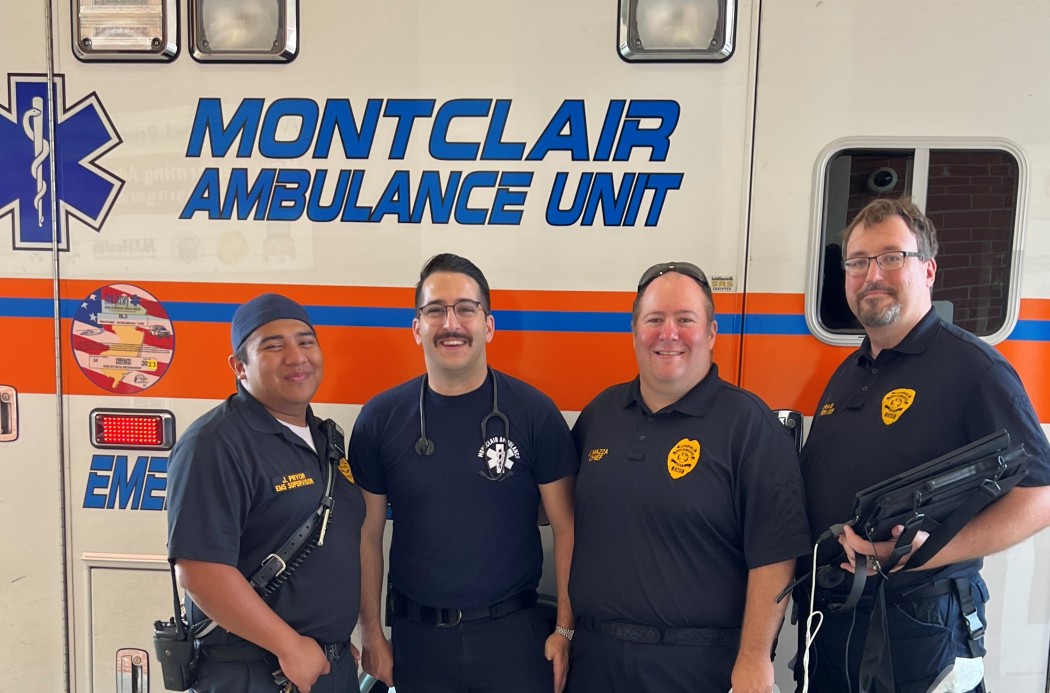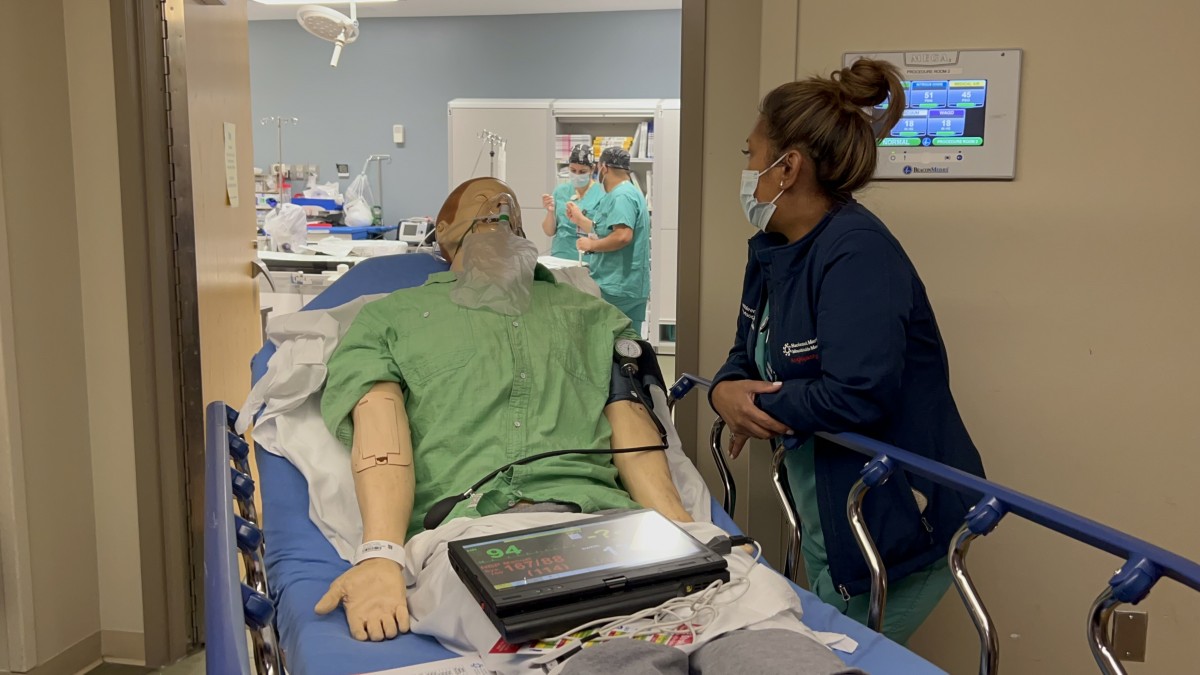Mountainside Medical Center and Montclair EMS Partner to Recreate “Code-Stroke” Scenario

On July 14, 2022, Mountainside Medical Center partnered up with Montclair EMS to simulate a “code stroke,” or the process for patients coming to the hospital experiencing a stroke. Simulations are tools used to replicate real life scenarios in order to educate, evaluate, and improve workflow.

A simulation manikin, also known as “the patient,” was utilized. The high-tech manikin, with voice capabilities, allows for EMS and hospital staff to treat the situation as they would in real-life by taking a patient assessment, including blood pressure and blood draws.

In this scenario, a 74-year-old male exhibiting signs of stroke was brought to the Mountainside Emergency Department by EMS. The patient’s symptoms included weakness of his right arm and leg, a facial droop on the right side, and slurred speech. A doctor and nurse assessed the patient and asked EMS personnel when symptoms started. Onset of symptoms is important to know because treatment is dependent on the length of time the patient has been experiencing symptoms. The sooner a person having a stroke seeks medical attention the better the treatment options and greater the likelihood of improved health status.

EMS reported that the patient’s signs and symptoms began one hour prior to arriving to the emergency department. They were immediately brought to the Radiology Department and a CT scan of the brain was performed. These tests help to determine if the patient has a brain bleed or a blood clot. The patient’s results showed that they had a clot. A clot busting agent, known as tPA, was immediately ordered. This medication can only be given up to 4.5 hours after symptoms start. The patient was also ordered to have a minimally invasive procedure known as a mechanical thrombectomy. This procedure helps remove a blood clot from the brain vessel via a catheter. The simulation ended once the patient was brought to the door of the interventional catheterization lab. Following the simulation, a debrief session was held where team members discussed positives and best practices, as well as areas of improvement to better care for stroke patients.
Mountainside Medical Center strives to provide the best stroke care for our patients and will continue to do these simulations to help us improve patient outcomes.
Thank you to our partners at Montclair EMS for collaborating with us and for providing the simulation manikin.

To learn more about stroke care at Mountainside Medical Center visit https://mountainsidehosp.com/services/neuroscience-institute#stroke.




